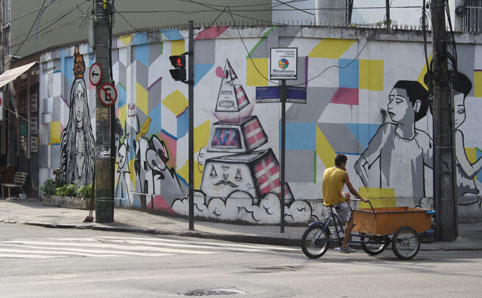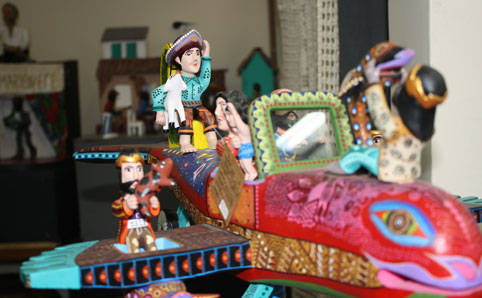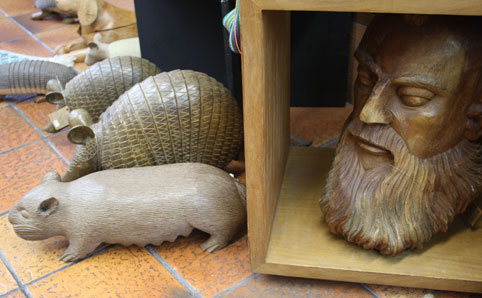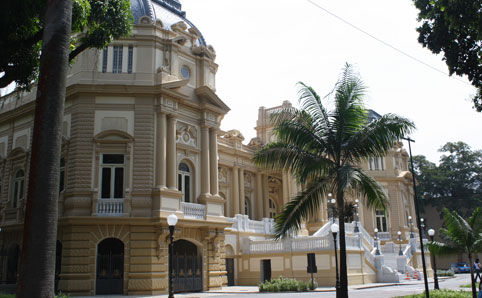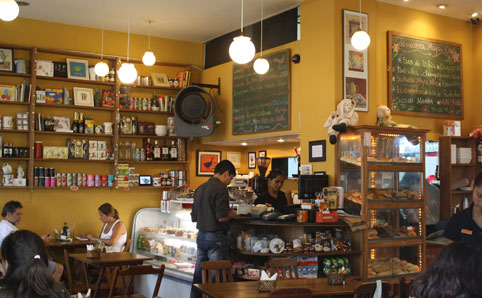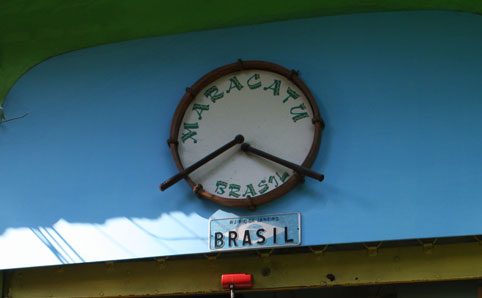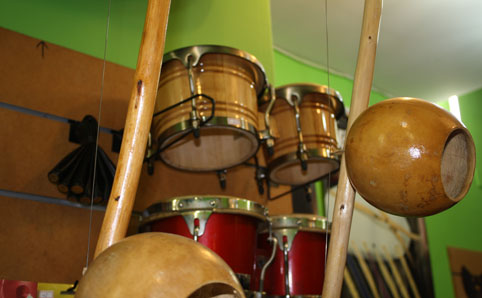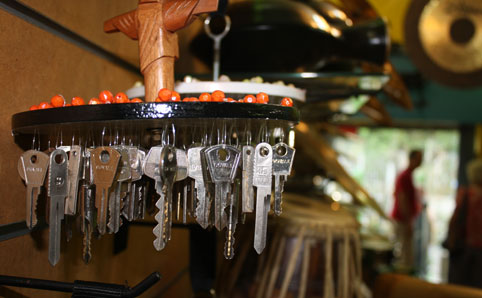
First inhabited in the Seventeenth Century, Laranjeiras is one of the oldest neighbourhoods in Rio, and has retained much of its historic charm despite the mass construction of high-rise flats along the main road, Rua Laranjeiras. Wedged between the hills of Santa Teresa and Botafogo, green havens of tranquillity peer out between the buildings, old botecos and restaurants still dominate, and slowly but surely café culture is creeping in.
Architecturally speaking, there are three buildings of note, even if only viewed from the outside; Palácio Guanabara, Palácio Laranjeiras and Fluminense Football Club. The former is the current seat of power of the State of Rio, newly renovated in 2011 and now a gleaming cream-coloured fairytale of a building. Visitors are no longer allowed inside, but the immaculate gardens are worth a quick look if you are in trousers and are nice to the receptionist.
The Palácio Laranjeiras is the former residence of the Guinle family, now gated off from the Parque Guinle, one of the cooler, more serene spots in the neighbourhood. Legends of the family losing all their money in gambling and poor business deals abound, and the house fell under Federal control in 1940. President Kubitschek moved in after the suicide of Getúlio Vargas in 1954 in the former Catete Palace, and since then it has received the likes of Charles de gaulle, Harry Truman and the Pope.
Completing the trio of late Nineteenth-early Twentieth-Century beauty is Fluminense Football Club, home of the first team in the city founded by Englishman Oscar Cox. Non-members can watch the top-flight team train in their former stadium, and the beautiful main building hosts a ballroom, trophy room and even a decent por-kilo restaurant.
Gastronomically-speaking, Laranjeiras may not be flushed with options, but there are a handful of excellent, unique restaurants nonetheless. Just off the lively, bygone-air of Praça São Salvador (filled with content locals on weekend evenings), Luigi’s (Rua Senador Correa 10, Laranjeiras 2205 5331) has an unimposing entrance, but once inside the covered outdoor terrace and wood-fired pizza oven make for a fine way to spend an evening. Lunchtimes are handled healthily at Canto d’Alice, a wonderfully rustic four-tiered buffet restaurant (R$39/kg) where the home-made food and fresh salads are a cut above the norm.
One of the best examples of the new breed of cafés is Maya, set on the ‘roundabout’ of Rua General Glicério, itself home to one of the biggest street markets in the city, held every Saturday morning. Bustling at breakfast and lunch thanks to the array of sandwiches, salads and cakes, evenings descend into wine-fuelled bohemian chill outs, the decent selection of reds, whites and sparkling attacked with aplomb.
The croissants and breads are excellent, but if it’s a more traditional bakery you are after head to Pão e Companhia (Rua das Laranjeiras 146, Laranjeiras 3518 4120/paoecia.com.br) on the other side of Pinheiro Machado where loaves and rolls of all persuasions can be bought by weight, as can a comprehensive, brunch-friendly buffet. Melone on the other hand, caters for the suco (juice), sandwich and salad crowd, filling up with students at lunchtimes, and nearby Normandia (Rua General Glicério 15c, Laranjeiras 2556 8076) is the nearest thing to a deli, with a wide selection of patê, cheese, cakes and breads to be found.
Quirky bars are a local trait too, those inside Mercadinho São José das Artes (Rua Laranjeiras 90, Laranjeiras) churning out impressive levels of icy beer and snacks from midweek through to weekend with varying degrees of enthusiasm. Boteco do Seu Dodo (Rua São Salvador 83, Laranjeiras 2205 0319) gets packed out despite doing little more than offering large bottles of beer to share and taking over the pavement with its tables and chairs, while just across the square Bar Brasil is a carbon copy of a Belmonte, albeit a very nice one.
For something rather more refined, Symposium has shelves of global wines at very reasonable prices waiting. South American labels are best-represented, but Europeans also grace the selection, perfectly accompanied by cheese platters, patês and risottos, and the occasional live jazz band. Rua Ipiranga is something of a trove of the unusual, with the arte naïf emporium Pé de Boi’s huge showroom of scupltures and paintings and Rio Maracatu’s drumming school and shop just a few doors along, and further down furniture specialist Fernando Jaeger has a showroom, opposite which a non-descript DVD shop has a rather charming café-restaurant out the back.
For the movie buff, Moviola is the most complete café, book and DVD shop around, loaded with specialist films from around the world. Entire sections dedicated to Japanese or Korean classics, obscure European art-house and some of the harder to come by directors show the owners intentions, and knowledgeable, friendly staff are on hand with suggestions.
Finally, one of the most famous roads in Laranjeiras, and one with its very own Carnival bloco, Rua Alice is well worth an amble for its beautiful houses, crazy pavements and occasional hidden gems. Herein lurks the classic vintage store Desculpe, Eu Sou Chique, packed with rails of clothes, lights, jewellery and VHS films, classic boteco Tasca do Edgar, and further up still, round a hairpin bend, is the site of some classic weekend samba, jazz and funk parties, former brothel Casa Rosa.

